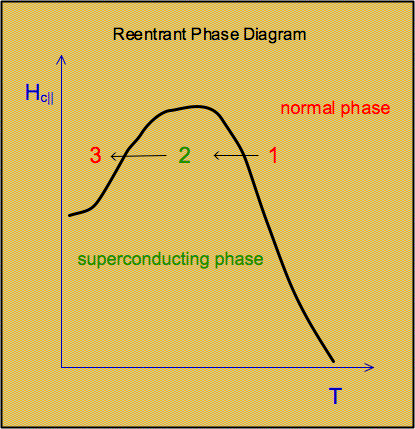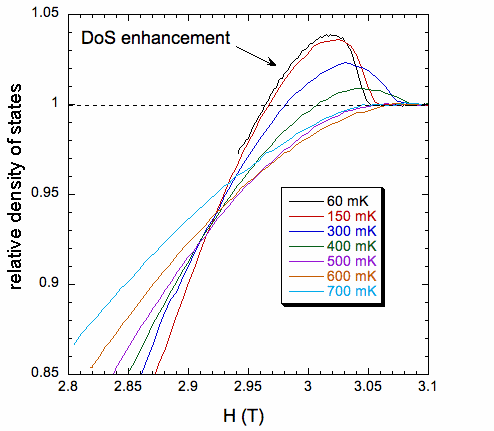
In the diagram on the left we show a generic reentrant phase diagram associated with a moderately thick Al film in a parallel field. In practice we have found that only films in the thickness range of ~ 5 nm to 9 nm will display reentrant behavior. Films that are thinner than 5 nm exhibit a classic spin-paramagnetic transition which is always hysteretic but never reentrant.
The chemical potential of the system is generally a function of H and T, u(H,T). It is easy to show the thermodynamics of the transitions 1 -> 2 and 2 -> 3 can be described by a Clausius-Clapeyron relation, dH/dT = -dS/dM, where, of course, dH/dT represents the slope of the critical field curve. In going from 1 -> 2, for instance, it is clear that dM > 1, since the normal state magnetization is that of a paramagnet and superconducting state has a small negative (Meissner) magnetization. We also expect that dS > 0 since a macroscopic quantum phase is usually more ordered than the normal phase. Thus the slope in the 1 -> 2 region is negative. By exactly the same arguement in the 2 -> 3 region, where the slope is positive, the entropy of the superconducting phase must actually be higher than that of the normal phase. Hence the term hyper-entropic. In principle this enhanced entropy should be evident in the tunneling density-of-states spectrum.

On the left we plot the field dependence of the zero bias tunneling density of states of a 7 nm Al film. The field is applied parallel to the film surface and the data was taken at 60 mK. Note the significant DoS enhancement near the critical field. These extra states lie at the Fermi energy and are associated with the superconducting entropy as discussed above.
Read more:
This work is currently in progress...